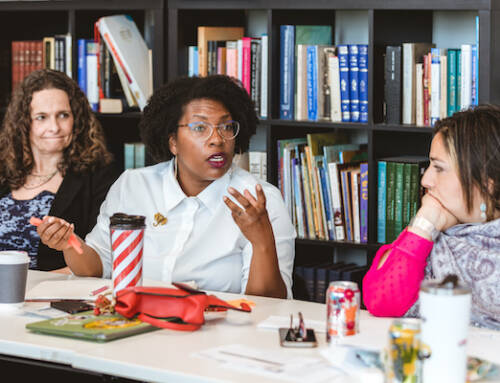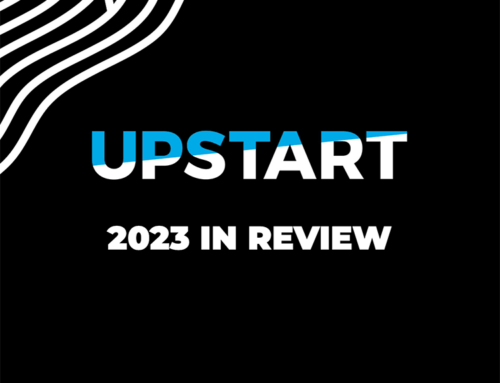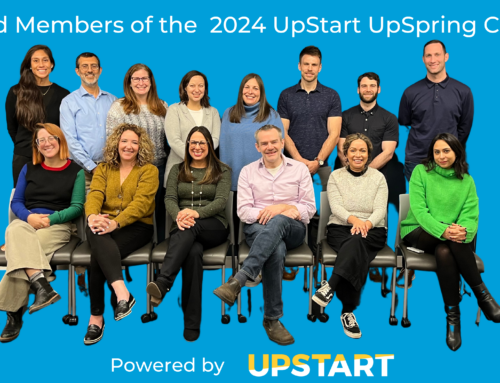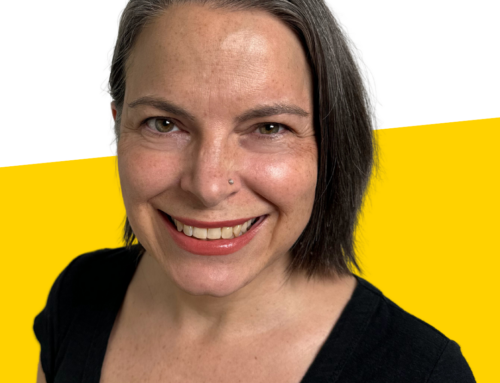Purim is a reminder that we must live in the complexity of conflicting narratives.
Tapestry by Smadar Livne; courtesy.
Rabbi Yitz Greenberg spoke recently at the Oshman Family JCC in Palo Alto. His topic was: Jewish Life in America – Past, Present, and Future. He opened by saying – “with a topic like that, I basically have license to talk about whatever I want.” But he nonetheless did proceed to outline what he believes to be the challenges (or opportunities, depending on whether you’re a half full or half empty kind of guy) facing the American Jewish community, as a direct result of its unique history in this country.
Core to his argument is the notion that the good, in any culture or tradition, is always mixed with the bad. More specifically, our tradition glorifies the “insiders,” and puts down the “outsiders.” We, the Jews, are kind, charitable, and smart. They, the goyim, are violent, drunk idolaters. They hate us, they are out to get us. Jews were persecuted and threatened, and so built themselves up and their own prestige by putting down their enemies.
That all fell apart in the Goldene Medine, a truly open society in which people choose how they want to live and what they want to believe. During the course of their rapid financial rise, and its accompanying level of acceptance, in the 20th century, Jews learned pretty quickly that such stereotypes were wrong. The blond non-Jewish girls seated next to them on university campuses were nothing like the shiksas their parents had warned them about, but instead were bright, good girls. Just the kind of girls, in fact, they would want to marry. And so, one by one, the stereotypes crumbled. When good values and practices are so deeply embedded in stereotypes and a narrative that proves untrue, those values and practices are abandoned.
Rabbi Greenberg shared that when he began his career in the 1960s, he knew that there was a race going on between the renewal and rebuilding of Jewish life on the one hand, and assimilation on the other. He thought that the two would meet somewhere in the middle. In fact, though, those attempting to keep Judaism relevant and meaningful are still way behind, scrambling to catch up.
His advice was the following:
- We must re-articulate the Jewish narrative. We must offer religious and moral experiences that are as powerful as other choices people have in the non-Jewish parts of their lives.
- Our infrastructure needs to respond to where people are. They won’t come to us.
- We need to engage Jews in a way that is simultaneously deep and distinctive, but that is not bigoted and tribalist.
“Good luck,” he told us, a room full of Jewish professionals, and he sat down.
In many ways, I think that Rabbi Greenberg’s diagnosis of the arc of American Jewish life and the consequent challenges and opportunities that face us as a community is right on. UpStart, an accelerator of innovative expressions of Judaism which I had the privilege to help design and found, was born from the troubling statistic found by a survey of the San Francisco Federation that 90% of Jews in the Bay Area felt completely disengaged from local institutional Jewish offerings. This is a community with the highest rates of intermarriage in the country, over 75%. UpStart was founded on the belief that if we do not start to really listen to what people need, meet them where they are, and offer vibrant, relevant, inspiring Jewish offerings, then Jewish life will indeed become diminished. The story of California’s Jews, and the fact that, in the past decade, so much Jewish innovation and creativity has come from the west, is testament to Rabbi Greenberg’s argument.
Yet, there is another side of the story. Horrific violent incidents of anti-Semitism are on the rise again in Europe. Israel is gridlocked in a terrible ongoing corrosive stalemate with the Palestinians and Arab states. The old narrative is not dead and gone. It is, unfortunately, very much alive. And, for most Jews around the world, they are living in it still.
The story, then, is not so simple. It reminds me of another story, one we are about to read again. It is an old story that continues to be so modern, so relevant – the Purim story. The Purim narrative contains both current Jewish narratives. As Rabbi Mosheh Lichtenstein taught:
“There are two types of existence in exile. One is characterized by persecution and hatred. There is no shortage of periods in Jewish history when we experienced this sort of existence. A different sort of exilic existence involves dealing with openness and friendliness on the part of the non-Jewish environment.’
The Megillah contains both. Achashverosh is a very open King. He invites everyone to his parties. He allows everyone to speak his own language, preserve his own culture. His search for a new queen is open to all – he’s looking for a gorgeous new wife, but doesn’t care what she believes or what language she speaks. That mode is very threatening to Jewish existence; the Rabbis of the Talmud criticize the Jews of Shusan for “partaking in the banquet of that wicked one,” Achashverosh, that open, pluralistic king (Megillah 12a).
And then there’s Haman, the narrative of Amalek, and the story-line that we continue to tell, in each generation, and that continues to be reinforced by our experiences, that no matter how assimilated we become, no matter how much we integrate into other societies, our enemies remember that we are Jews, and are out to get us.
Purim is a reminder that we must live in the complexity of the conflicting narratives. As much as I would like to embrace Rabbi Greenberg’s call to re-write the Jewish narrative, I do not think that would be authentic to the Jewish past or the Jewish present. But I agree with him that focusing only on the negative narrative is ultimately harmful to the Jewish future.
It would be so much easier to choose one side or the other – which is what we so often do. But we need to live in both. And Purim actually offers us some advice around how to do that. Its mitzvot can be read as metaphors, which answer the question of how we might live in the space of two, often-conflicting narratives:
- Read the Megillah – The very act of continuing to tell the story of our people, framing and re-framing the narrative, examining its complexities, allowing for its contradictions, will help prevent us from falling too easily into one story-line or another.
- Matanot L’Evyonim – Give gifts to the poor. This is a metaphor for engaging with the other, whomever that may be. In order keep Judaism meaningful, relevant, and alive going forward, we need to engage with those who think differently from us, who disagree with us most. The secular may be poor in one perspective, just as the religious are poor in another. We owe each other the gifts of our diverse, and conflicting, experiences, and the beliefs they have spawned.
- Mishloach Manot Ish L’Reiehu – Nourish each other. It is hard to go out and engage the other when you have not nourished and supported those who think like you. Some denominations do this better than others. We owe it to each other to create opportunities and experiences that nourish the Jewish ideas and stories and practices in which we believe. If we do not share them with our neighbors, with those around us, they are at risk of becoming lost.
- Seudah – Finally, we must, in our most intimate environments, with family and friends, with our parents and our children, celebrate Judaism. That is the core of our tradition. It must be full of joy, laughter, connection, and, yes, even silliness. It must be the stuff of life, the stuff that makes life alive. And, in that most intimate space, we should not preach the one right way, the one true Jewish narrative. The opposite – we must allow ourselves to get into a state in which we do not even know the difference between Haman and Mordecai. We must, in that most intimate environment, genuinely accept the complexity, the multi-facetedness, the 70 faces of our tradition.Purim Sameach.
Maya Bernstein is an Associate at UpStart Bay Area.
Our purpose is to enable entrepreneurs to bring bold Jewish ideas to light. We help them reach Up to people in new ways that are meaningful, more inclusive, and create a brighter future for our Jewish community and the world we share.






